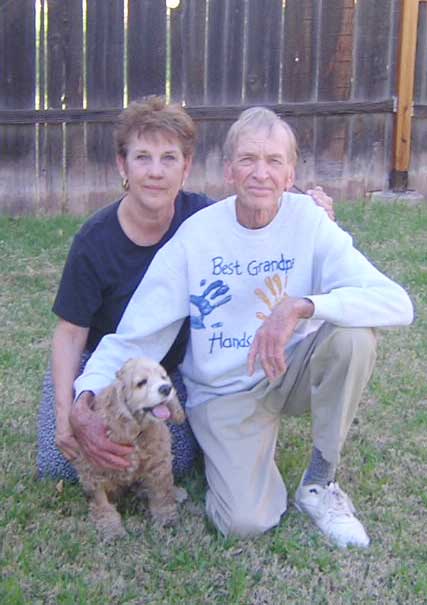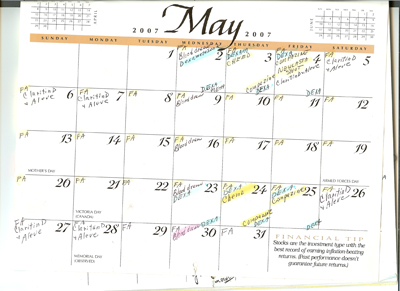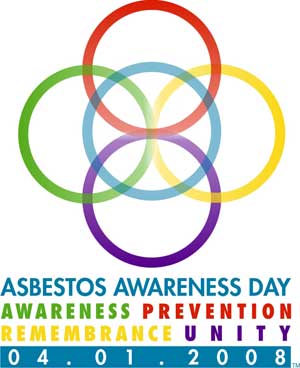This was written by Lois Schwarting, regarding her husband’s experience with Alimta/cisplatin chemotherapy for his mesothelioma.
Marty got Alimta/cisplatin. Carboplatin is a little bit easier on the body, or at least easier on the kidneys. Here’s some things to do to prepare for the chemos! If your husband has more trouble with being constipated than he does having loose stools, buy a stool softener and have ready for him. Here in the states we can easily get Dulcolax and that is what Marty uses.
Now, with Alimta Marty was to take folic acid something like 600 to 1000 mcg or 1 mg each day for one week prior to chemo. We bought 400 mcg tablets at COSTCO–anyhow, he took one tab in a.m. and one tab in evening since two to take for good dosage. I have decided to scan his calendar for last May (2007) and you can see how I marked calendar so be sure to have him taking his meds properly! Guess better to know what your husband is going to be given as chemo b4 tellyouwhat all….
Ah! Anyhow, using Alimta/cisplatin…Day before, day of and day after chemo – dexamethasone to be taken twice day. Day following chemo go back to doc office for Neulasta shot (this is to increase white blood cells to help fight off any infection or bacteria from ANYTHING – because the chemo is hopefully going to destroy all cells, including cancer ones, but it is not “smart enough” to detect the good red and white cells are needed so destroys them too. So, reason for the Neulasta and also the B12 shots the doc will give you as necessary! Anyhow the Neulasta shot can cause bone pain and/or body rash or itching, so we were told to buy over-the-counter Claritin D & Aleve and Marty was to take one tablet of each after receiving the Neulasta shot – we bought on way home and he swallowed them with water when we got home. He took one of each of those tablets the day of the Neulasta shot and one of each tab on all three days following. Marty did not have any bone pain, and he did not have any rash. Some times he would have some itching, but slight.
To begin with, Marty had his chemo on Thursday. One week we switched it to Friday, and so he went back for his Neulasta shot on Monday, and it didn’t seem to make any difference.
Now, on the calendar, you will see where I had written blood draw on Wednesdays. That is because he was to have his blood drawn the day prior to chemo infusion. If his blood counts were too low, the doctor would not have given him chemo the next day. However, he never had that problem and always was able to get the chemo every 21 days until he had a total of 7 infusions.
Marty was released from hospital, Mar 9, 2007.
On Mar 14, 2007 he went to doctor office and agreed to chemo and we were told which meds used and given Rx for dexamethasone. Marty was given a B12 shot and we were told to get the folic acid and he was to start on that the same day so he would be on it for one week prior to chemo. (also, be aware that ALWAYS schedule and plan to take Folic Acid (FA on my calendar notes) every day and mark out at least 21 days from the day of chemo — NO MATTER WHAT… Because even at the end of chemotherapy, the patients are to take folic acid for 21 days following last Alimta chemo treatment.
Be sure you have a prescription for compazine (brand name) was given for nausea – JUST IN CASE! We got that filled, as well. Oh, note that I wrote compazine on the days of chemo as well as the day following chemo. YOU DO NOT WANT TO WAIT UNTIL NAUSEA SETS IN AND THEN TRY TO FIGHT IT. TRY TO WARD IT OFF BY TAKING THE COMPAZINE AFTER YOU GET HOME THE DAY OF CHEMO, AND TAKE EVERY 4 HOURS TIL BEDTIME. NEXT A.M. start the day off with compazine and continue every 4 hours. If not trouble with nausea, could discontinue taking it.
Ask for a prescription of Ondansetron Orally Disintegrating Tablets (ODT) – they are a bit expensive and may have to get prior approval by insurance. We had to! I’d actually gotten these before we were to go on a cruise in case Marty might have problems with nausea even though would be off chemo by then. We happened to have in the house already when he got the “dry heaves” and I gave him a tablet and it stopped the dry heaves RIGHT NOW! YEP, RIGHT NOW IT WORKS!
FOOD: I made puddings and soups and gravy with WHOLE MILK (not less fat or fat free) and even used HALF & HALF. I tried whipping cream but it was so rich and thick it was yuck or not good! The texture more like ice cream! Anyhow, I hope you like to make home made food, Marjory. If so, cook lots of fresh vegetables and protein foods. It is better for your husband to eat small portions several times a day — try to get him to eat every 3 hours or so. Use plastic sandwich bags or some small containers to freeze little “meals” for your husband to eat “on demand”…. if you have food put away in the freezer from each meal you cook, you can say: “I have ________, _________, ___________ and __________ tell me which one you want! Then, you can just reheat and give him a meal.” At first Marty liked sweets, and I’d made triple batches of strawberry/rhubarb cobbler and would freeze packages of it. I’d make puddings. Bought all kinds of fresh fruits. Had bought Ensure for him. After his second chemo he no longer wanted to eat sweets – the “taste buds” on the tongue are affected by chemo! He liked salty foods! Like pork roast cooked with sauerkraut. Dill pickles.
He has ALWAYS wanted to eat eggs and though you will read to make sure you cook the eggs until they are “hard” we did not abide by that!
If your husband likes deviled eggs (cut the hard-boiled egg in half, scrape out the yolk and mix with “stuff” then place back in the hard-cooked white of the egg) – fix some of them for him. At first I would mix the yolk with mayonnaise and little bit of mustard and maybe bit of chopped onion for more flavor. When he wanted “salty” or “sour” type, then I would add some vinegar to the yolk.
Anyhow, EVERY SINGLE MORNING SINCE CANCER WAS DIAGNOSED, I have fixed him two eggs “over easy” (with the yolk still runny), two slices of bacon, one slice of wheat bread, and gravy made with milk or half and half and the bacon drippings. He has ALWAYS LIKED THAT. Before cancer I did not cook breakfast for him. I worked and he often times would not even eat breakfast. Since “Mr. Meso” breakfast is his FAVORITE MEAL of the day, and so I always fix it for him about 1/2 hour after he awakens.
For a full profile on Marty and Lois, click here.





 Posted by John Caron
Posted by John Caron 
Cancer commentary #2
March 14, 2008Patient “S.G.”
You can’t believe it’s happening to you, really you can’t. First they cut out my colon and then radiated me twenty-five times each time was like being put in a microwave and then I had ten chemo treatments and each one of those made me sick beyond belief, then more surgery for blockages and things you just can’t even bear to know what they are, they’re so bad.
And all the time you can’t believe it’s you and your body, the one you’ve had all your life that’s just failing on you. You want to know about faith in God? That’s my rock. God, my family, and my doctors, in that order, faith like a rock and the will to live. Your will to live has to be more tenacious than the cancer. Take it one day at a time, beat back the depression that’s dogging you at every turn, beat it back with with a smile, an iron smile that refuses to bend.